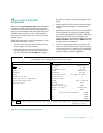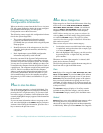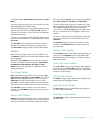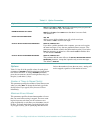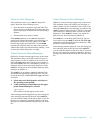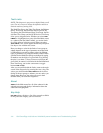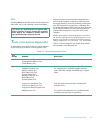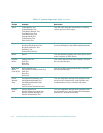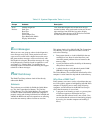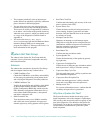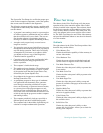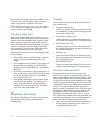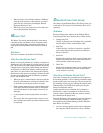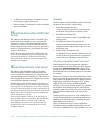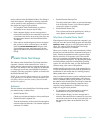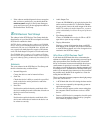
Running the System Diagnostics 5-11
E
rror Messages
When you run a test group or subtest in the diagnostics,
error messages may result. These particular error mes-
sages are not covered in this chapter because the errors
that generate these messages can be resolved only with
Dell technical assistance. Record the messages on a copy
of the Diagnostics Checklist found in Appendix A, and
see Chapter 11, “Getting Help,” for instructions on
obtaining technical assistance and informing the support
technician of these messages.
R
AM Test Group
The RAM Test Group subtests check all the directly
addressable RAM.
Subtests
Three subtests are available for RAM: the Quick Mem-
ory Test, the Comprehensive Memory Test, and the
Cache Memory Test. The Quick Memory Test performs
an address check to determine whether the computer is
properly setting and clearing individual bits in RAM and
whether the RAM read and write operations are affecting
more than one memory address location at one time.
This subtest checks all available RAM. The Comprehen-
sive Memory Test also performs an address check, as
well as the following:
•
Data pattern checks, to look for RAM bits that are
stuck high or low, short-circuited data lines, and
some data pattern problems that are internal to the
memory chips
•
A parity check that verifies the ability of the memory
subsystem to detect errors
•
A refresh check, to verify that the dynamic RAM
(DRAM) is being recharged properly
The Cache Memory Test confirms the functionality of the
computer’s cache controller chip and the cache memory.
Why Run a RAM Test?
Faulty memory can cause a variety of problems that may
not, at first glance, appear to be happening in RAM. If the
computer is displaying one or more of the following
symptoms, run the subtests in the RAM Test Group to
verify that the memory is not at fault:
•
A program is not running as usual, or a proven piece
of software appears to malfunction and you
confirm that the software itself is not at fault. (You
can confirm that the software is functioning properly
by moving it to another computer and running it
there.)
SCSI
Devices
Internal Diagnostic
Seek Test
Read Test
Write Test
Audio Output Test
Eject Removable Media
Display Information
Tests SCSI host adapters and all the SCSI devices
attached to them. Also can be used to remove CDs and
tape cartridges from SCSI devices and to display
information about the types of SCSI devices installed
and the resources allocated to them.
Table 5-2. System Diagnostics Tests
(Continued)
Test
Groups Subtests Description
NOTE: For the full name of an abbreviation or acronym used in this table, see the abbreviation and acronym list.



